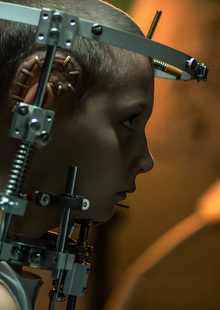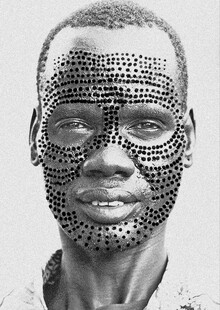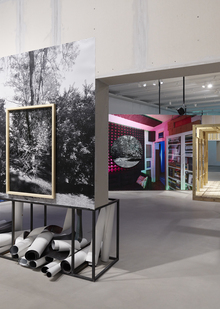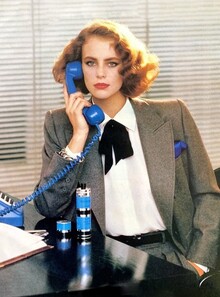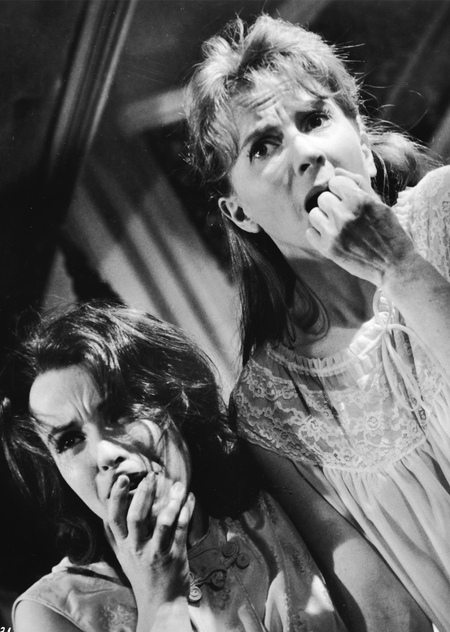
Analysis of visual narrative of The Haunting (1963)
The Haunting (1963) by Robert Wise is the first and most literal adaptation of Shirley Jackson novel «The Haunting of Hill House» (1959). It’s a slow burn considered a masterpiece of horror cinema. Interestingly enough, there is no ghost in that ghost story. There is some entity though and it only manifests itself through the work of Director of Photography. That’s how visual narrative works! BEWARE OF SPOILERS!

It’s a story of four people with the main protagonist being Eleanor Lance. She is a disturbed woman who has nothing of her own, no home, no belongings, no one to love her.
She is invited to participate in an experiment conducted by Dr Markway in what he thought to be a haunted house. He chose her because she had an encounter with paranormal before (but basically forgot about it).
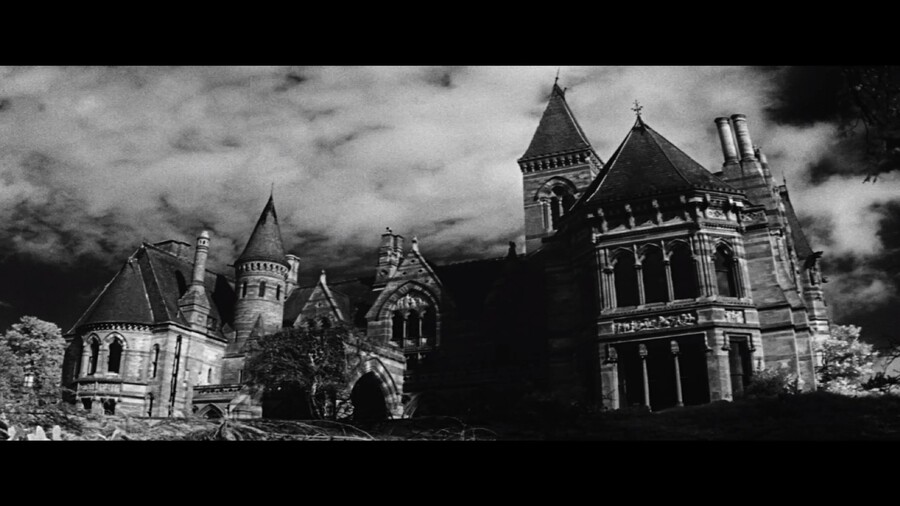
Hill house is 90 years old and it’s been bad since it was built. It killed the wife of its creator even before she reached the house.
The First Death
Like I said before the whole haunting motif in this movie is created by camera work. Let’s see what it tells us in the scene of the first death in the story.
What do we see here? To my mind we see three different POVs: objective POV, the entity’s POV and the victim’s POV and then the entity’s POV again. Let’s deconstruct the scene.
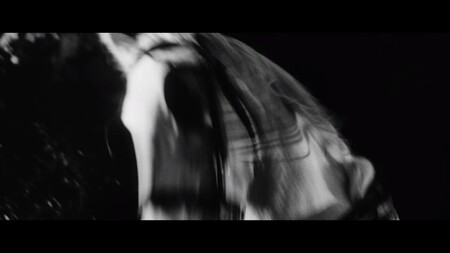
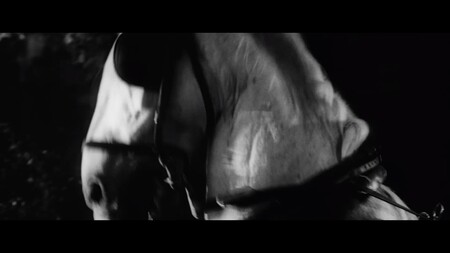
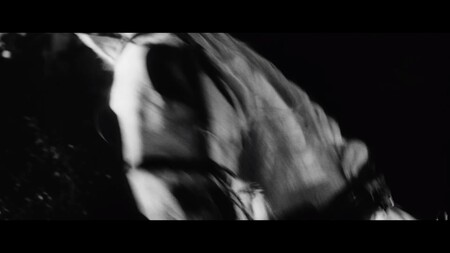
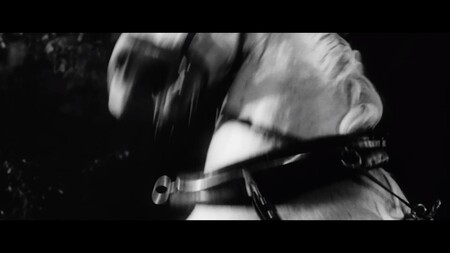
This strange angle looks like someone stands close to the horses and spooks them. But no human could stay this close, so clearly that was the entity. Since there is no ghost I will call this paranormal unliving thing the entity.
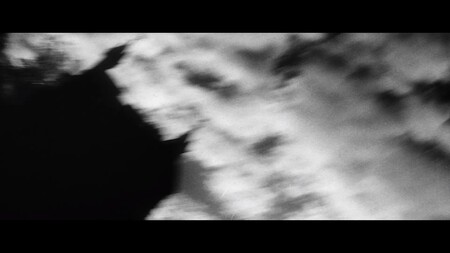
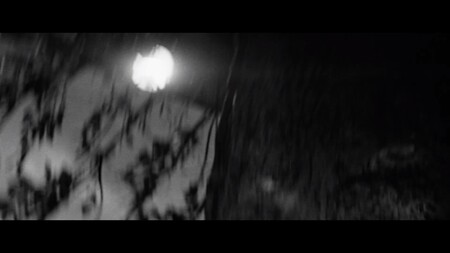
The next set of blurred images is the victim’s POV, what she saw in the last seconds of her life, and the final image is the tree trunk (below).
Then we see a very strange angle on the broken carriage and the victim’s hand falling down into frame. That’s the entity’s POV again (below).
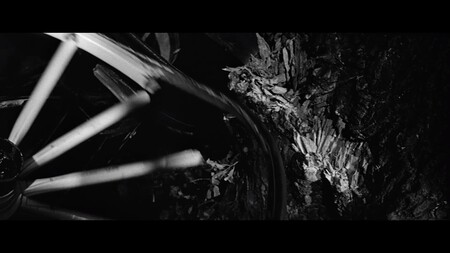
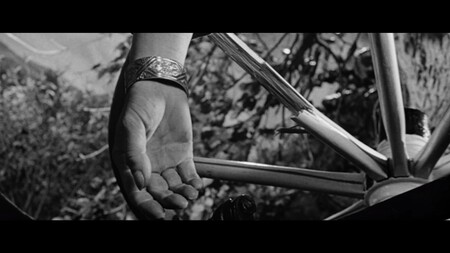
That means, all victim’s deaths are framed with the entity’s gaze before and after the event (and in the process as we’ll see later). But this visual structure is repeated in all the deaths and unsuccessful attempts to kill Eleanor. Let’s see.
The Second Death
Let us deconstruct it too. First we have some objective view of the woman walking along the corridor and stopping when the door opens. Then we see her up close from above, with the image distorted as if it was some eye or (subjective) camera view.
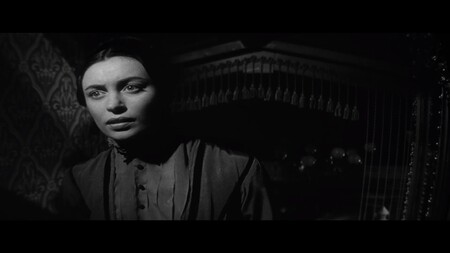

Then we again see the entity’s POV: hands trying to stop the fall and the woman falling. We see it from aside. As if someone is standing near and sees the event happening. We also see blurred images of the stairs and the ceiling turning from the victim’s POV.
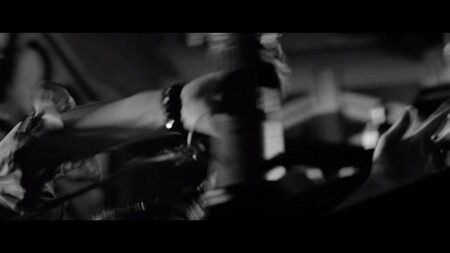
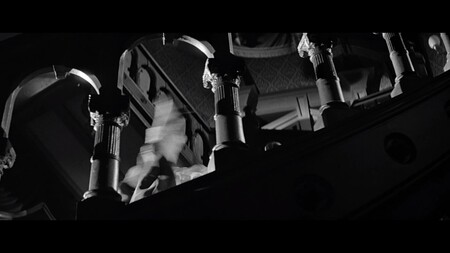

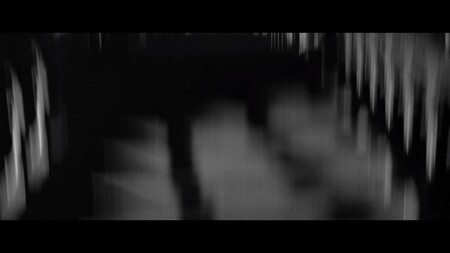
And then we see her final view (the opposite wall upside down) and we also see the entity’s POV at the victim. It`s distortion is the same as the image of the victim before the fall.

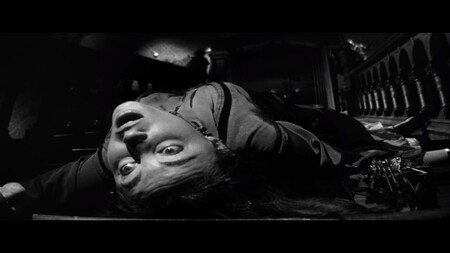
The Third Death
The third death has a bit different structure but there is a reason for that.
The third victim committed a suicide because she was driven into insanity by the entity. So she climbed the library stairway and hanged herself from the top balcony. Let’s see those images.
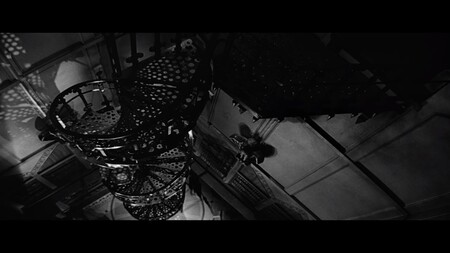
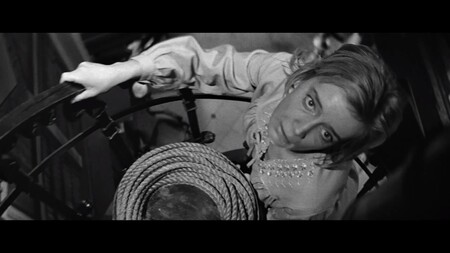

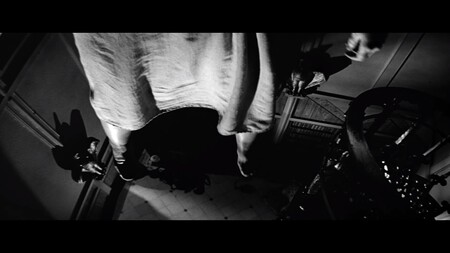
Here we only see the entity’s POV. No victim’s POV shown. But it feels like the entity is dragging the victim up the stairs and then it stops on the stairs below the balcony and waits her legs to fall. It happens in the same manner as the hand in the first death.
The Two Incidents with Eleanor
Eleanor had several encounters with the entity. But twice she was close to death and the visual structure of the incidents repeated the previous victims'. Let’s see.
The first case was the balcony incident.
Again, we see the entity’s POV as it is looking at Eleanor and then approaches her very fast. We also see Eleanor’s POV which tell us she was about to fall. But she was saved by Dr. Markway.
The second case was on the library stairway again. As Eleanor is driven up the stairs we see her POV and the entity’s POV. Let’s look.

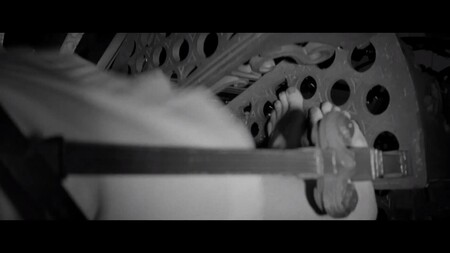
Above we see the entity’s POV and below we see the would be victim’s POV.

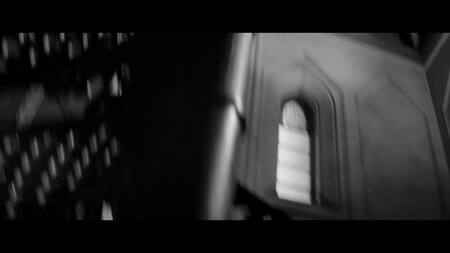
But then Dr. Markway and the others find her and intervene. Dr. Markway saves Eleanor again. But that just postpones the inevitable.
The Fourth Death
The final death comes at the very end of the film. Eleanor drives her car away from the house, she knows she will not leave because the fence gate is closed. But she drives on anyway.
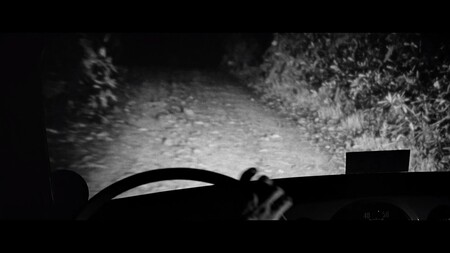
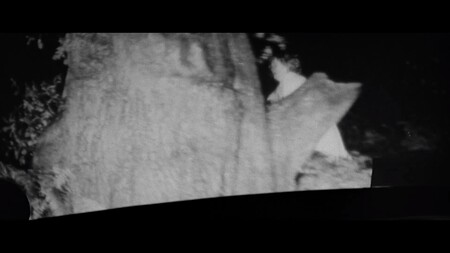
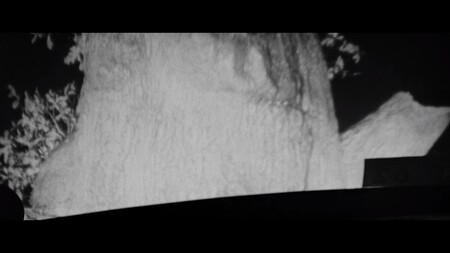
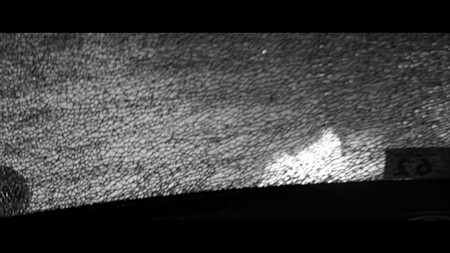
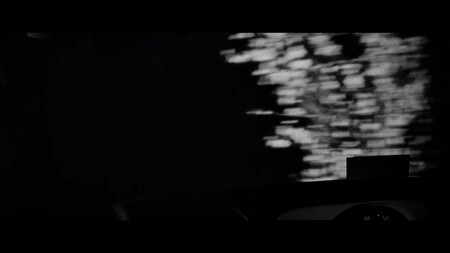

We see her POV the whole time and we also see her. But the last view is a strange low angle view of the car’s wheel. As if someone is hiding behind the car, lying on the ground (maybe that’s Eleanor’s POV, but I doubt she saw the car from that angle from where she was lying).
The Gaze
There are other motifs in the film. No, it’s no «other motif», it’s still the same motif of looking, of staring, of the gaze. It’s the main motif of the film which is an integral part of the whole narrative. And partially we have already seen it — THE GAZE of the house/entity. Since the house IS the entity. And that is also the DP’s work. We see that gaze through his camera. Let`s look!
When Eleanor first arrives at the house, she stops and says: «It is staring at me». And we see her looking at the house and then the house looking back at her shown as two sides of a usual dialogue.


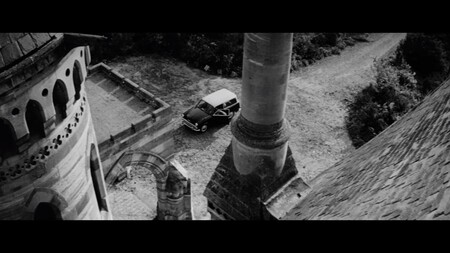
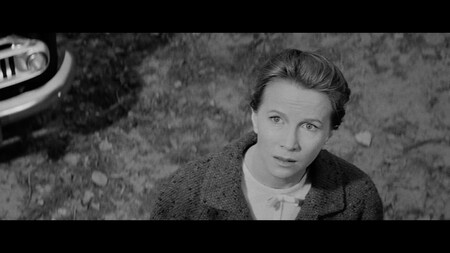
The house watches the people all the time.

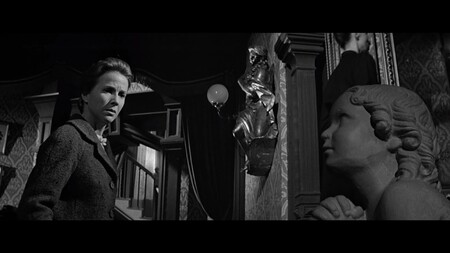
Not only with it’s windows, but also with it’s busts, sculptures and faces everywhere, even if it`s just at the corner of your eyes. The gaze is there all the time.

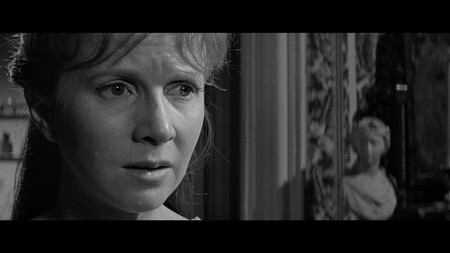
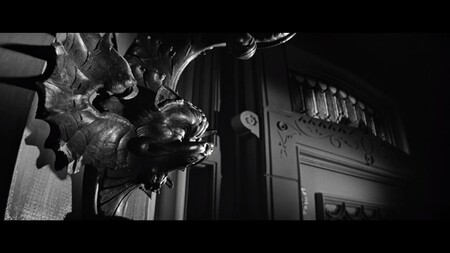
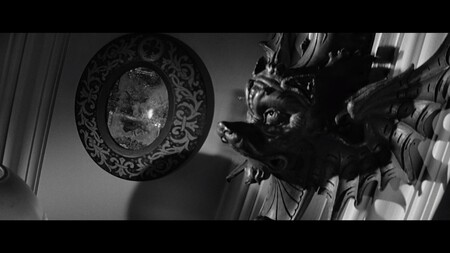
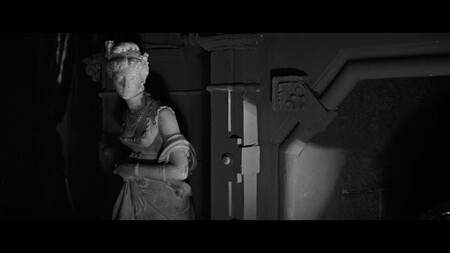
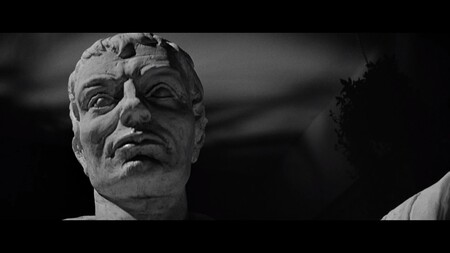
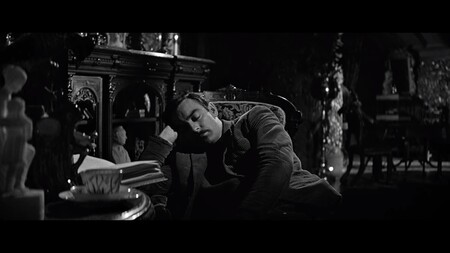
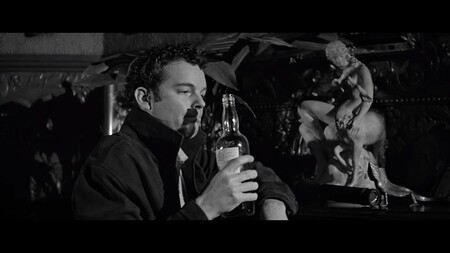
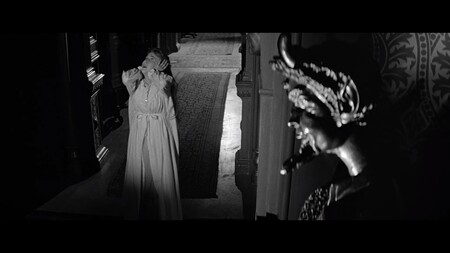
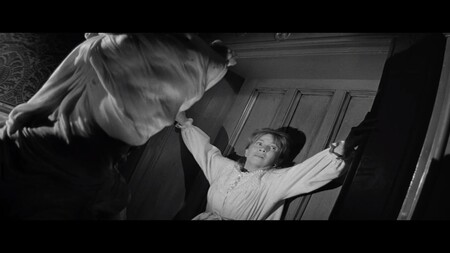
There is also Medusa the Gorgon on the door handle, they say it might mean female rage. It gives it’s angry look to the viewers too. By the way, all deaths in the house are female. I have no idea what it means but there is also unspoken lesbian topic in there. It is never mentioned in the dialogue, except once and very ambiguously. We know that Theodore (the second woman) is a lesbian. A scene about that was filmed but at the end was not included in the film. Maybe, that means that the entity was a lesbian and consumed only women? Just a crazy idea.
The house also looks through the mirrors. Even though one of researchers has read reflections as Eleanor’s sense of belonging, I still think it`s also the gaze. Which doesn’t contradict the sense of belonging idea. Eleanor wants to belong somewhere and she feels good in this company, in that house. She doesn’t want to leave.
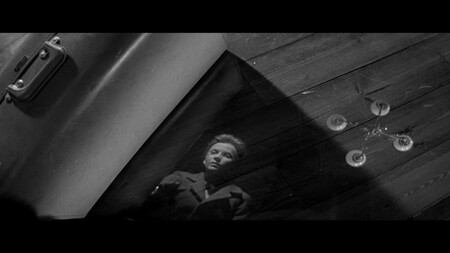

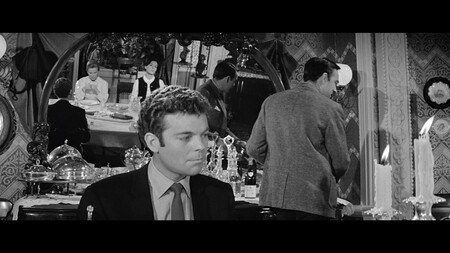
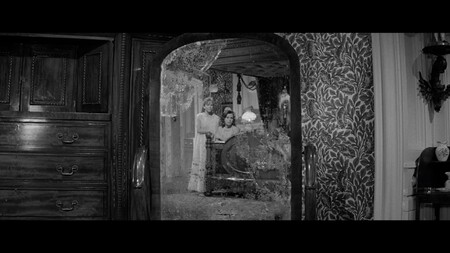
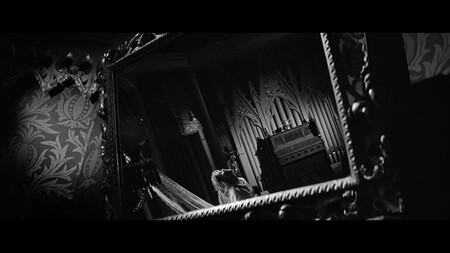

It’s possible that the final reflection of Eleanor entraps her soul. The mirror falls and shatters.
The entity also looks at them from above: from top corners of different rooms or directly from above. Those frames are distorted as if we look through some surveillance cameras.

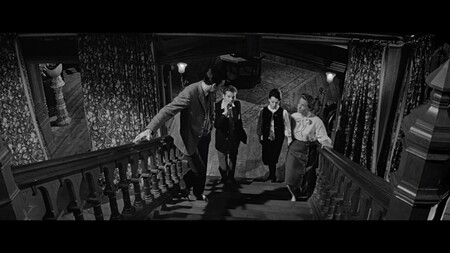


The Space
The film’s DP also made sure we understand when something paranormal is truly happening in the story. As long as there is no supernatural activity happening the space is shown as flat. That means there is no visible perspective, all the people in frame are about the same size, and there is almost no lens distortion on the sides of the frame. As soon as the entity is present the space becomes deep: corridors and arcs, thresholds and lens distortions. So, images get more distorted when supernatural forces are at work. And even when the space is more or less deep during the no-paranormal-around scenes, the decor is so rich, we don`t see the deepness of the space, or the human figures make the space flatter than it really is.
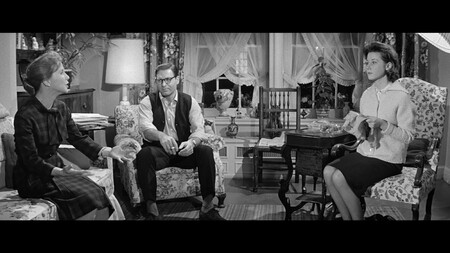

Flat space, normal camera angle and almost no distortion mean there is no ghosts or other paranormal entities around. The first screenshot shows Eleanor still at home, not in Hill house. The second screenshot shows her with Dr. Markway at Hill house but that is in bright morning when nothing is happening.

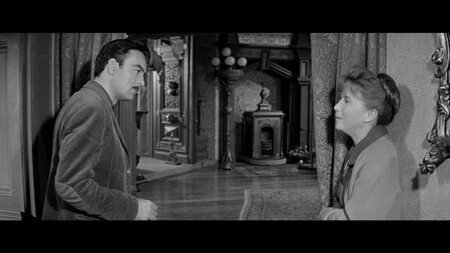
Even deeper space in those scenes feel like flat because all the decor texture and mise-en-scene flatten it.
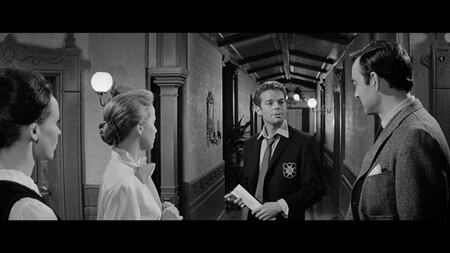
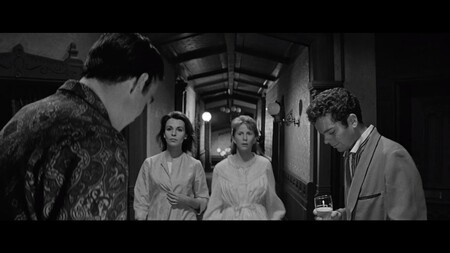
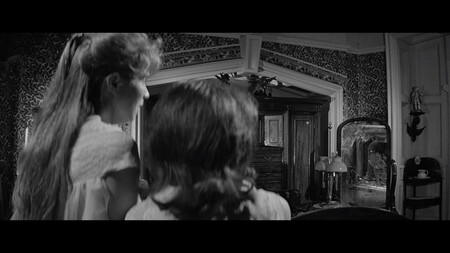
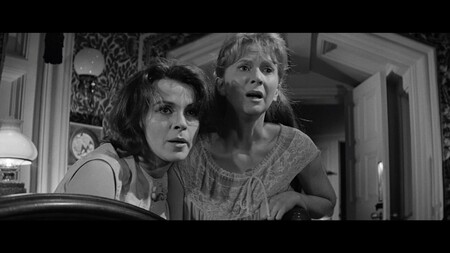
When paranormal activity is active, we see deep spaces: corridors, arcs and wide lens distortions. It looks eerie and beautiful.
At the time the widest available lens were 40 mm and 35 mm, but Panavision was developing 28 mm lens. It was in experimental stage and wasn’t ready for film production. But Robert Wise insisted on having that lens for his movie. He wanted those distortions. So he talked the Panavision president Bob Gottschalk into letting him have that lens. They made Wise sign a paper saying that he knew about the distortions and would not complain about them. That’s how he got those distortions.
The house was shot during the day on infrared film, so the sky was black and the trees were eerie bright and the whole picture made spooky impression. Exterior was shot on location at Ettington Hall near Stratford-on-Avon (England). Now it`s a hotel. Not haunted. Interiors were created at the studio.
Turner, George E. Elegant Chills. American Cinematographer (August, 1999) pp 82-88.
Caputo, Mariel. Mirroring Identities in Robert Wise’s The Haunting (1963) web page, accessed 01.11.2025
Criterion collection DVD commentary of the director and the cast.
The Haunting (1963) Dir Robert Wise, DP Davis Boulton.
